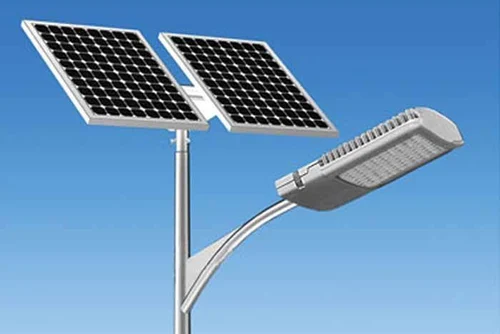The Rise of Solar Lights: A Sustainable Lighting Solution
Solar lights are revolutionizing the way we think about outdoor and indoor lighting. As the world shifts towards more sustainable energy solutions, solar-powered lighting is emerging as one of the most popular choices for environmentally conscious consumers. By harnessing the power of the sun, solar lights offer a green alternative to traditional electrical lighting systems, reducing reliance on fossil fuels and minimizing energy costs. This article delves into the various benefits, types, applications, and future prospects of solar lights.
Understanding Solar Lights
At their core, solar lights are lighting systems that operate using energy derived from the sun. They consist of solar panels, which absorb sunlight during the day, and a rechargeable battery that stores this energy. When the sun sets, the stored energy is used to power the light. Most solar lights use light-emitting diodes (LEDs) for illumination due to their low energy consumption, long lifespan, and brightness.
Unlike conventional lights, which depend on an external power source, solar lights are self-sufficient. They are designed to be easy to install, with no wiring required, making them ideal for outdoor use where electricity may not be readily available.
Advantages of Solar Lights
Solar lights offer numerous advantages, making them a smart choice for various applications. One of the most compelling benefits is their contribution to sustainability. By using renewable solar energy, solar lights reduce the carbon footprint, promoting a cleaner environment. They do not rely on non-renewable energy sources like coal or natural gas, making them a key element in the global push for greener solutions.
Additionally, solar lights help reduce electricity bills. As they run on free solar power, they eliminate the need to pay for electricity used in lighting. This can result in significant savings over time, especially for outdoor areas like gardens, driveways, and pathways that require constant lighting.
Another notable advantage is their low maintenance. Solar lights are generally designed to be weatherproof, durable, and require minimal upkeep. With no wires or cords to worry about, they are not only easier to install but also safer, reducing the risk of electrical hazards. Furthermore, the longevity of LEDs and the rechargeable batteries ensures that solar lights will continue to perform for many years.
Types of Solar Lights
There is a wide range of solar lights available on the market today, each designed for specific applications. Some of the most popular types include:
Solar Garden Lights: These are commonly used to add ambiance and illumination to gardens and landscapes. They come in various designs, including decorative lanterns, stake lights, and string lights, providing a beautiful and energy-efficient way to highlight outdoor spaces.
Solar Pathway Lights: Ideal for illuminating walkways, driveways, and garden paths, solar pathway lights are designed to guide the way at night. Their low-profile design ensures that they do not obstruct pathways while offering safety and visual appeal.
Solar Security Lights: Solar-powered security lights are often equipped with motion sensors, which can detect movement and activate the light. These lights are perfect for improving the security of a property by providing bright illumination when motion is detected, alerting homeowners to potential intruders.
Solar Flood Lights: These high-powered lights are designed to cover large areas, such as yards, parking lots, or sports fields. Solar flood lights are typically used for security, outdoor events, and any setting that requires bright, widespread lighting.
Solar Street Lights: Often seen in public spaces, solar street lights are an excellent option for urban and rural areas without access to traditional electrical infrastructure. These lights provide reliable illumination for streets, parks, and public pathways, contributing to safety and energy efficiency.
Applications of Solar Lights
The versatility of solar lights makes them suitable for a wide range of applications. One of the most common uses is in residential settings, where solar garden lights and pathway lights can enhance the aesthetics of a home while providing practical lighting. Additionally, solar lights are widely used in commercial spaces, such as hotels, restaurants, and shopping centers, to illuminate outdoor areas and reduce energy costs.
Public spaces also benefit from solar-powered lighting, especially in remote or rural areas where traditional grid electricity may be unavailable. Solar street lights and security lights can help improve safety and visibility in these locations without the need for costly infrastructure installation. In developing countries, solar lights have become an essential tool for providing basic lighting to off-grid communities, improving living conditions and increasing access to educational and economic opportunities.
The Environmental Impact of Solar Lights
The environmental impact of solar lights is a key factor in their growing popularity. By using renewable solar energy, these lights contribute to reducing greenhouse gas emissions and reliance on fossil fuels. The reduction in energy consumption is particularly significant in the context of the global fight against climate change.
Solar lights also promote energy independence by allowing individuals and communities to generate their own electricity, which can be especially beneficial in regions with unreliable power grids or frequent outages. As the cost of solar technology continues to decline, it is becoming an increasingly accessible and viable solution for both urban and rural populations.
Challenges and Limitations
Despite their many benefits, solar lights do have some limitations. One of the primary concerns is their dependence on sunlight. On cloudy days or during winter months when sunlight is limited, solar lights may not perform at their best. However, advancements in battery technology are improving the efficiency of solar lights, allowing them to store more energy and operate for longer periods.
Another challenge is the initial cost of purchasing and installing solar lights. While the long-term savings on electricity bills can offset this cost, the upfront investment may be a barrier for some consumers. Additionally, the efficiency and durability of solar lights can vary depending on the quality of the components used, so it’s important to choose high-quality products for optimal performance.
The Future of Solar Lights
The future of solar lighting looks promising, with continued advancements in technology driving innovation and affordability. As solar energy becomes more efficient and cost-effective, solar lights are expected to become even more accessible to consumers worldwide. Additionally, smart solar lights that integrate with home automation systems are gaining popularity, offering greater control and flexibility.
As the world moves towards a more sustainable future, solar lights will play an increasingly important role in reducing energy consumption, minimizing carbon footprints, and improving quality of life. Their environmental, economic, and practical advantages make them a key solution in the transition to a cleaner, greener world.
Conclusion
Solar lights are an innovative and eco-friendly lighting solution that is transforming the way we illuminate our world. With their numerous benefits, including sustainability, cost savings, and low maintenance, solar lights are poised to become an integral part of both residential and commercial lighting systems. As technology continues to improve and the demand for renewable energy sources grows, solar lights will undoubtedly play a significant role in shaping a greener, more energy-efficient future.
Keep an eye for more latest news & updates on USA Upmagazine!






